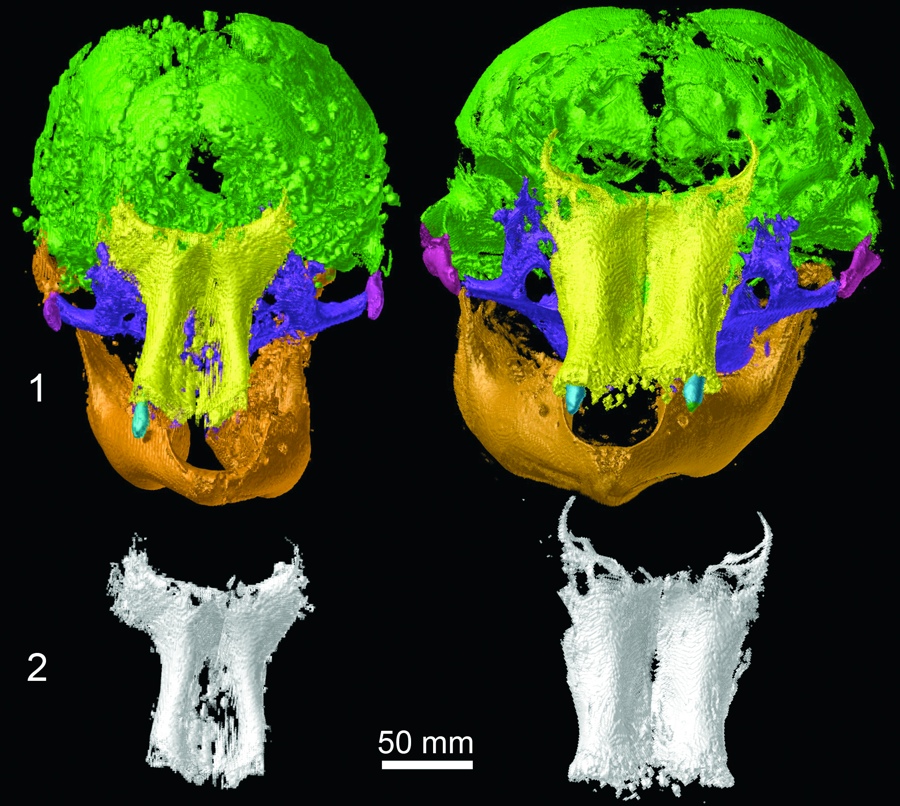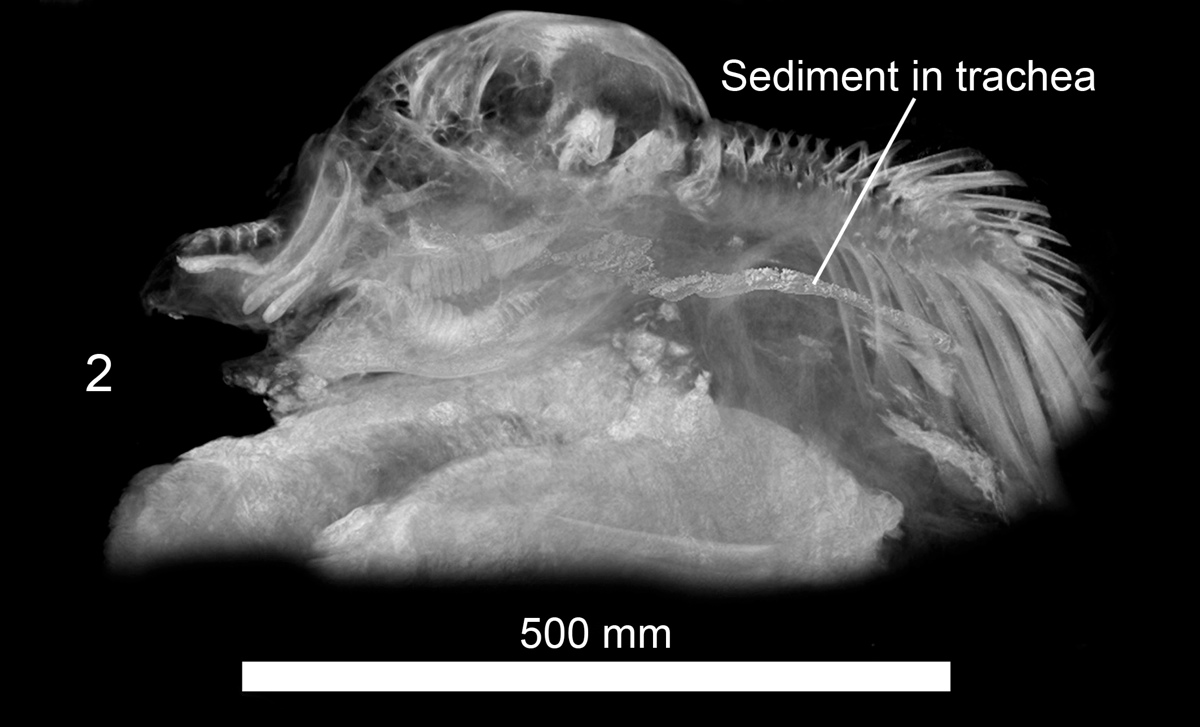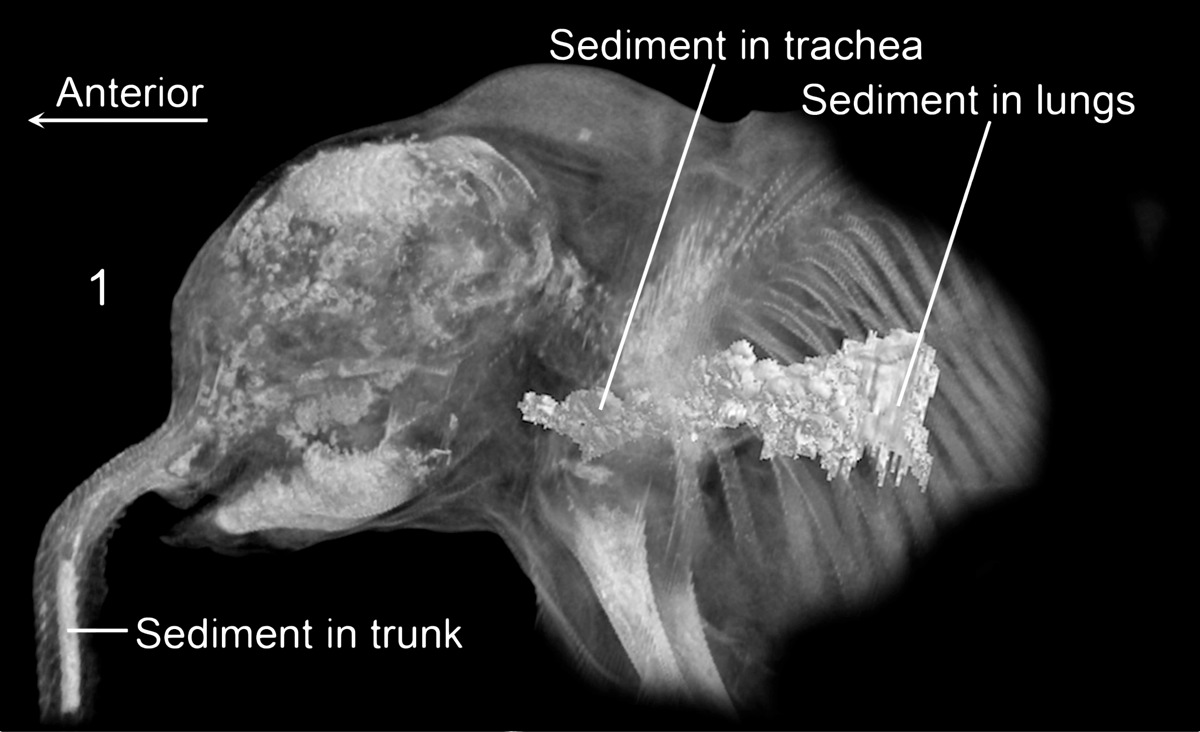Skin and Bones: Inside Baby Mammoths
Lyuba's legs

CT images showing Lyuba’s hind legs (top left) and front legs (top right). Bone shafts that are already well-hardened are white, and poorly mineralized ends of bones are brown. Blue dots within leg bones represent an iron phosphate mineral that follows the location of iron stores related to hemoglobin production while the calf was alive. At bottom is a CT scan of Lyuba’s developing left humerus, or upper arm bone.
Khroma and Lyuba

Khroma was about 2-months old and Lyuba was just 1-month old when she died. Yet Khroma's brain was smaller at her death than the typical newborn elephant, suggesting mammoths had different developmental trajectories than elephants.
Mud inhalation

Though Krhoma's cause of death was originally a mystery, the new analysis suggests that she suffocated on mud, just like Lyuba.
Cause of death revealed

Here, an up-close look at the viscous mud that suffocated Lyuba. She initially got the mud stuck in her trachea after crashing through an icy lake and doing a face plant in the muddy bottom. An effort to dislodge it only wound up pushing it into her trunk and lungs.
Get the world’s most fascinating discoveries delivered straight to your inbox.

Stephanie Pappas is a contributing writer for Live Science, covering topics ranging from geoscience to archaeology to the human brain and behavior. She was previously a senior writer for Live Science but is now a freelancer based in Denver, Colorado, and regularly contributes to Scientific American and The Monitor, the monthly magazine of the American Psychological Association. Stephanie received a bachelor's degree in psychology from the University of South Carolina and a graduate certificate in science communication from the University of California, Santa Cruz.


